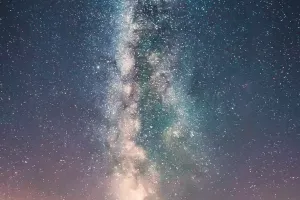April 22 every year is Earth Day. Your whole life will be spent on this blue planet, but how much do you know about it? Here are a few interesting facts about Earth.
1. How old is the earth?
The issue of the age of the earth is very complicated, and in fact, there is no conclusion yet. The reason is because scientists believe that the earth has two ages, one is called the geological age and the other is called the astronomical age. Astronomical age refers to the time from the beginning of the formation of the earth to the present, and geological age refers to the time from the beginning of the geological process of the earth to the present. Scientists speculate that the earth was a very high temperature lava ball when it first formed, and it took hundreds of millions of years of cooling before it became a crust and was able to undergo geological processes. So the geological age of the earth is less than the astronomical age. The oldest rocks that can be found are 4.374 billion years old, so at least it is certain that the Earth's geological age is greater than that number.
2. Earth's Bodyguard
Does Earth have bodyguards? Yes, and more than one. There are many meteorites and asteroids in the vast universe. If one of them hits the earth unfortunately, once the size is larger than a certain value, it will cause disaster. It is estimated that an asteroid 10 kilometers in diameter (a very small number, equivalent to only 1,300 of the volume of the Earth) is enough to release the energy equivalent to the explosion of 20 trillion tons of TNT. Such an impact would generate enormous shock and heat waves, trigger fires and earthquakes of more than 10 on the Richter scale, move continental plates and create tsunamis as high as 300 meters. Fortunately, the earth has two bodyguards: one is the moon, which always revolves around the earth, blocking a lot of "bullets" for the earth, as evidenced by the pitted surface. The second is the big brother of the eight planets: Jupiter. The particularity of Jupiter's orbit makes it stop most of the meteorites or asteroids that should have flown to Earth for us.
3. Did the Earth ever have two moons?
The moon was originally a part of the earth, a large piece of the star stripped from the earth. But what many people don't know is that the earth actually had two moons. About 4.5 billion years ago, the newly formed Earth was slammed by a planet the size of Mars, and the debris was scattered, and part of the Earth's debris flew into orbit around the Earth. Under the action of gravity, they gathered together again to form two moons, one large and one small. Tens of millions of years later, in an accidental accident, two moons collided, and one of them was destroyed, leaving only the moon we see today. According to computer models, the impact should have occurred on the far side of the moon today, resulting in a more undulating landscape on the far side of the moon. At the same time, the shock wave of the impact pushed the magma inside the moon near the surface, creating the bizarre feature of a thinner crust near the surface.
4. How many satellites can you guess around the earth?
What do you think the satellites around the earth look like? A satellite or two? In fact, there are 38,000 man-made objects orbiting Earth, 22,000 of which are over 10 meters in size, and at least one falls back to Earth every day!
5. If the Earth stood still for a second...
Have you ever wondered what would happen if the earth stopped spinning for even a second? First of all, all people and objects will maintain the speed of rotation due to inertia, what is it? 465 m/s! This is far beyond the escape velocity of Earth, which means that more than half of people and objects will be launched into space. Secondly, the movement of the air mass is also inertial, that is to say, the atmosphere will continue to move at a speed of 1670 km/h on the previous equatorial rotation line. At this time, strong winds will form an unprecedented level of global storms. The friction between the strong winds and the earth is enough to cause fires and unprecedented wear and erosion. And this will lead to the disappearance of the earth's magnetic field, and human beings will be completely exposed to the deadly ionizing radiation environment. Third, the movement of the sea will also change due to the stoppage of this second, the ocean will be redistributed, and many areas will be flooded by torrents.


